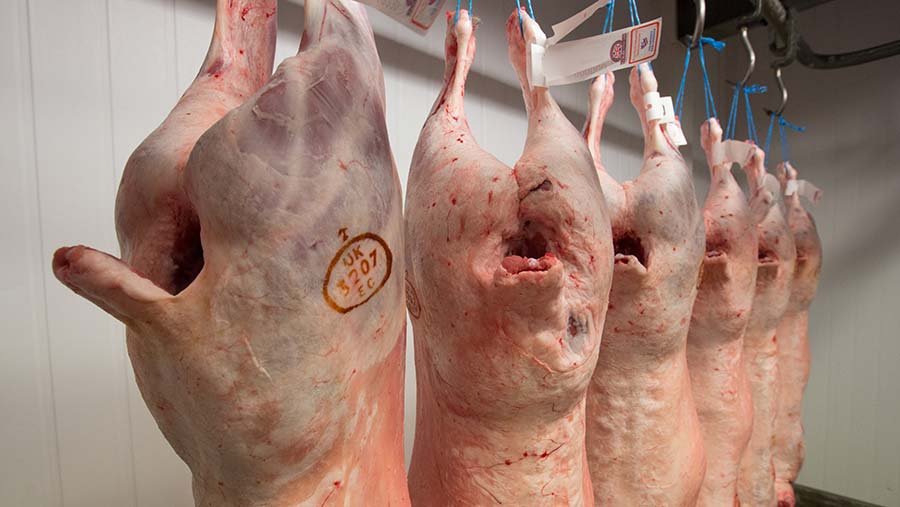VIA puts focus on retail sector in Texel breeding values
 © Tim Scrivener
© Tim Scrivener The use of video image analysis (VIA) for the grading of carcasses has moved the Texel Sheep Society one step closer to developing a set of breeding values to better suit the needs of the retail sector.
A project run by the society in conjunction with Scotland’s Rural College (SRUC) and ABP Food Group has created 15 VIA breeding values for traits covering both the overall carcass and key primal cuts.
The research involved grading more than 3,000 Texel-sired lambs using VIA at ABP’s Yetminster abattoir in Dorset, with primal joints further assessed by computed tomography (CT) scanning.
See also: Guide to CT scanning and how it can work for your flock
Texel Sheep Society data and technical manager Ed Smith explained: “These crossbred breeding values will in time be combined to create a single economic index which will help to more accurately identify superior sires within the Texel population to deliver carcasses best suited to the needs of the retail sector.”
Sire comparisons
The analysis revealed that the difference in offspring performance between the highest and lowest sires equated to about 360g of lean meat, said SRUC researcher Nicola Lambe.
The distribution of muscle between the hind, mid and fore primal regions also differed between different sires.
“This means that across their typical working life, one sire could produce lambs estimated to be worth a total of £30-£40 more to the processor than another sire, even if the carcasses of those lambs were all the same weight and similar Europ grades,” she explained.
Meeting specification
ABP agriculture manager James Draper said: “Using this crossbred lamb data has helped refine genetic evaluations and shown that there is an opportunity to exploit both EBVs and GEBVs for carcass yield to benefit everyone in the lamb supply chain.”
Mr Draper believes there is a lot of scope for improvement in the sheep sector, with more than 40% of lambs slaughtered in the UK failing to meet the preferred specification of E,U and R grades at fat class 2-3.
“Producing lambs in specification means there is less waste at every point in the supply chain, reducing the carbon footprint of lamb production and improving farm profitability as more lambs are eligible for premium payment rates,” he added.
“In addition, reducing the age at slaughter can make a significant difference to flock profitability, with lambs sold sooner and, therefore, costing less to finish and freeing up grass for other stock, with reduced vet and medicine costs too.”
